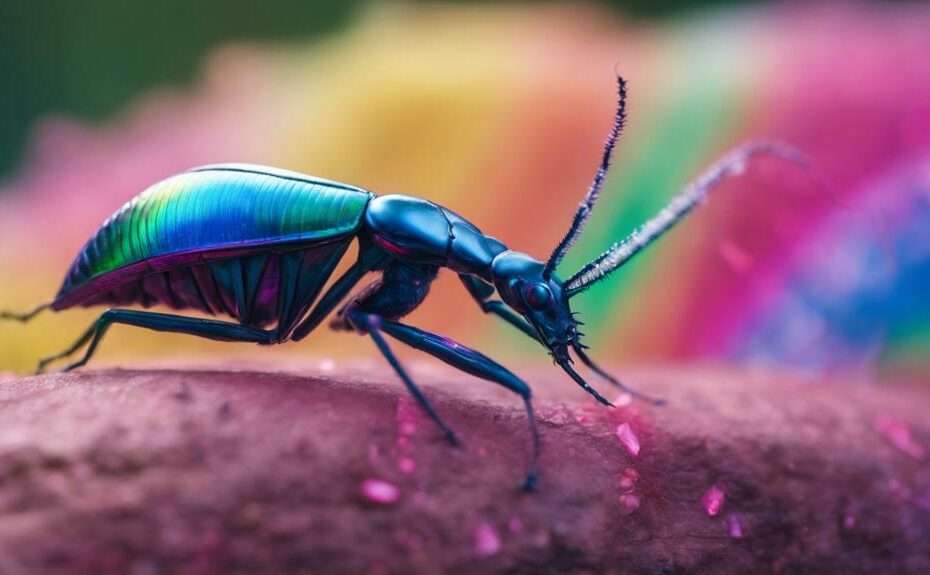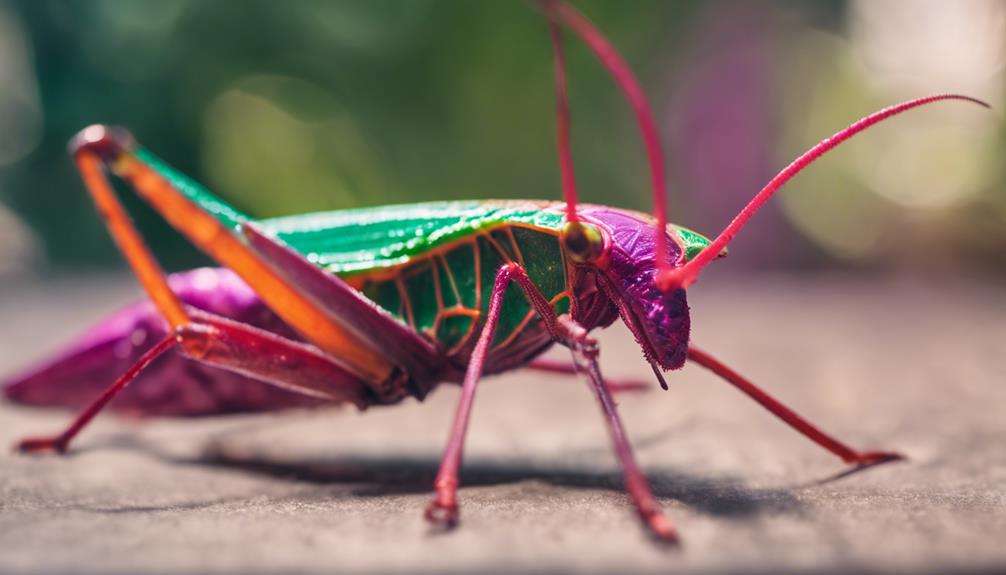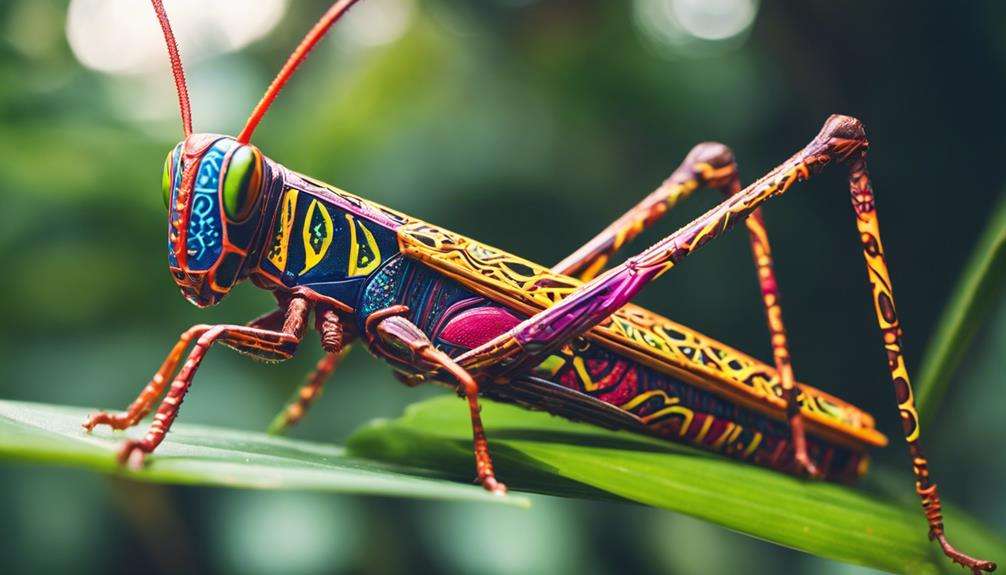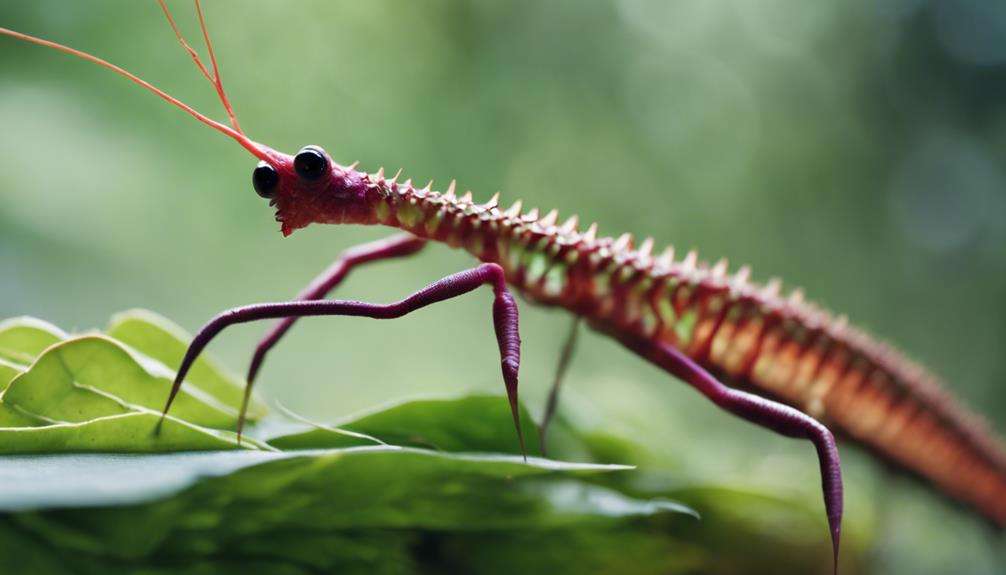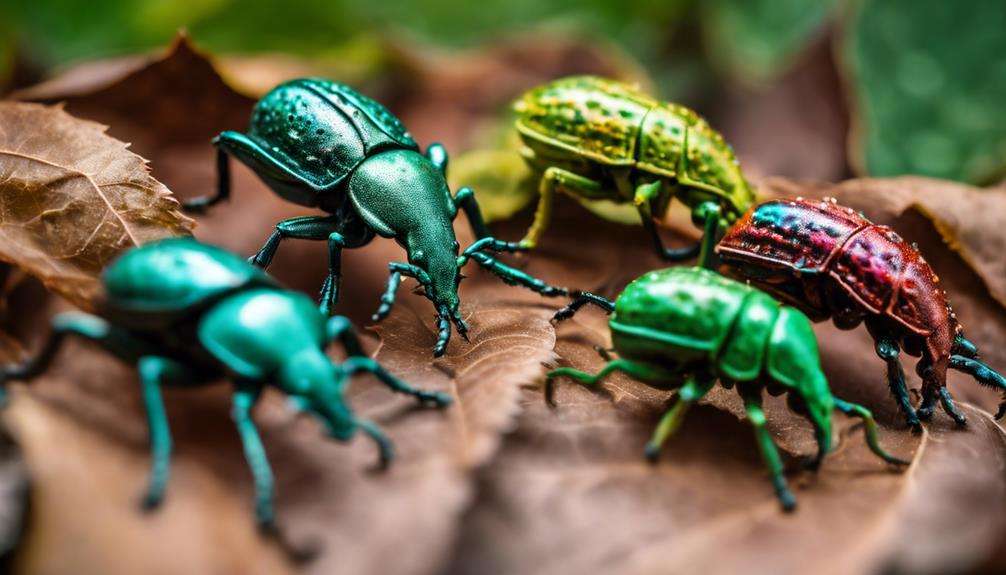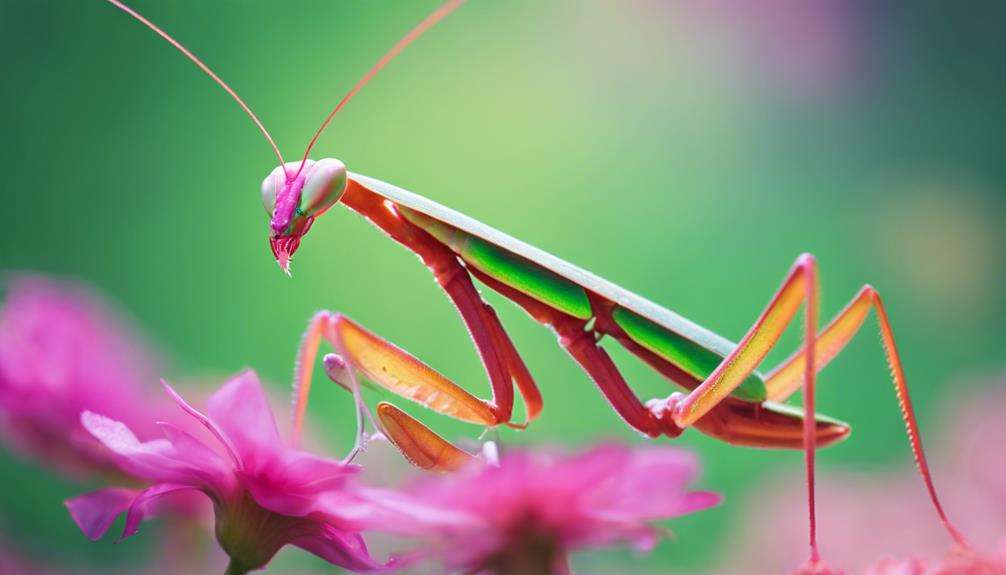Embark on an entomological exploration with a selection of startlingly strange insects waiting to join your collection. From the Scorpion Fly's peculiar appearance to the enigmatic habits of the Hammer Head Worm, these creatures offer a glimpse into nature's endless oddities.
With a list that includes the formidable Goliath Beetle and the mysterious LeafHopper, each insect brings its own tale of survival and adaptation.
Stay tuned to uncover more about these captivating creatures and the secrets they hold within their tiny world.
Key Takeaways
- Explore unique insects like Scorpion Flies with scorpion-like defense mechanisms and Hammer Head Worms with hammerhead-shaped heads.
- Discover exotic species such as Goliath Beetles, gentle giants from tropical rainforests, and LeafHoppers, vital for ecosystems as plant sap feeders.
- Encounter desert-dwelling creatures like Camel Spiders, not actual spiders but fierce predators in desert regions.
- Add impressive insects like Hercules Beetles, known for strength and docility, and Puss Moths with striking transformations and harmless defenses to your collection.
Scorpion Fly
Inhabiting various environments such as gardens, woodland edges, and meadows, the Scorpion Fly showcases a unique defense mechanism that never fails to captivate observers. When threatened, this fascinating insect curls its abdomen up, mimicking the appearance of a scorpion's tail, giving it an intimidating aura that deters potential predators. This adaptation serves as a clever ruse, deterring threats and allowing the Scorpion Fly to escape unscathed.
Despite its somewhat menacing facade, the Scorpion Fly is harmless to humans, making it a curious and intriguing insect to study up close. Its male counterpart boasts impressive features such as large pincers and long tails, which play crucial roles during the mating process. These insects aren't only visually striking but also functionally adept, using their pincers not only for courtship rituals but also for capturing prey and as an additional line of defense. The Scorpion Fly truly embodies the marvels of nature with its intricate adaptations and behaviors.
Hammer Head Worm
Have you ever encountered the fascinating Hammer Head Worm, a predator with a head structure reminiscent of a hammerhead shark, thriving in tropical regions with its unique hunting strategies? These creatures are truly remarkable in their adaptations and behaviors.
Here are some intriguing facts about the Hammer Head Worm:
- Found in tropical regions, these worms can reach lengths of up to 15 inches, boasting a snake-like body.
- Using paralyzing enzymes, they inject earthworms to immobilize them as part of their hunting strategy.
- The Hammer Head Worm's distinctive head structure, resembling a hammerhead shark, aids in its predatory behavior.
- Sporting a light or honey-colored body with dark stripes, these worms have a unique appearance in their habitat.
- Equipped with a retractable proboscis for feeding, Hammer Head Worms showcase fascinating adaptations for capturing prey.
The Hammer Head Worm is a true marvel of nature, showcasing remarkable features and strategies that make it a captivating species to study in tropical regions.
Goliath Beetle
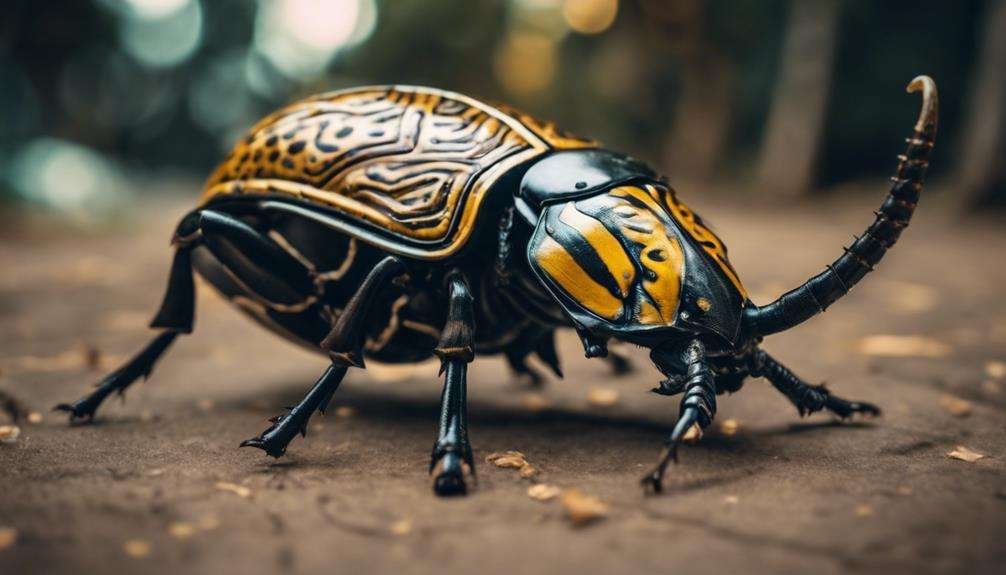
You're about to uncover the captivating world of the Goliath Beetle – a colossal insect that can reach up to 4.5 inches in length, making it one of the largest insects on the planet.
Found in tropical rainforests, these beetles wield powerful mandibles for both defense and feeding, showcasing a fascinating blend of strength and grace in their behavior.
As you learn more about their impressive size, unique characteristics, and gentle nature, you'll be drawn into the intriguing realm of caring for and handling these remarkable creatures.
Goliath Beetle Facts
The Goliath Beetle, known for its impressive size and vibrant colors, is a fascinating insect found in tropical rainforests.
Get ready to be amazed by these incredible facts about the Goliath Beetle:
- One of the largest insects globally, males can reach lengths of up to 4.5 inches.
- Their strong mandibles serve both for defense and feeding purposes.
- Despite their size, Goliath Beetles are gentle creatures and are even kept as pets in some regions.
- These beetles boast stunning colors and intricate patterns that make them stand out in their lush habitats.
- Goliath Beetles play a crucial role in their ecosystems through their feeding behavior and interactions with plants.
Habitat and Behavior
In tropical rainforests, the Goliath Beetle thrives, showcasing its impressive size and unique behaviors. These beetles, while predominantly found in Africa, have also been introduced to New Zealand.
Within their habitat, Goliath Beetles are known to feed on fruits and sap, utilizing their strong mandibles for both defense and nourishment. Interestingly, despite their intimidating length of up to 4.5 inches, these insects are surprisingly docile, making them popular as pets in various regions.
Their behavior includes producing a distinct hissing sound when feeling threatened, a fascinating trait that adds to their allure. Observing these gentle giants in their natural environment can offer a glimpse into the remarkable world of these colossal creatures.
Care and Handling
For optimal care and handling of Goliath Beetles, ensure their enclosure provides a warm and humid environment to support their well-being. These fascinating creatures with long legs require specific care to thrive. Here are essential tips to ensure your Goliath Beetle remains healthy and happy:
- Maintain a warm and humid environment in the enclosure.
- Offer a varied diet of fruits, vegetables, and protein sources like dog food or fish flakes.
- Handle the beetle gently to prevent stress or injury, considering their sensitivity.
- Provide a spacious enclosure with substrate for burrowing and climbing, mimicking their natural habitat.
- Regularly mist the enclosure to sustain proper humidity levels for the beetle's overall well-being.
LeafHopper
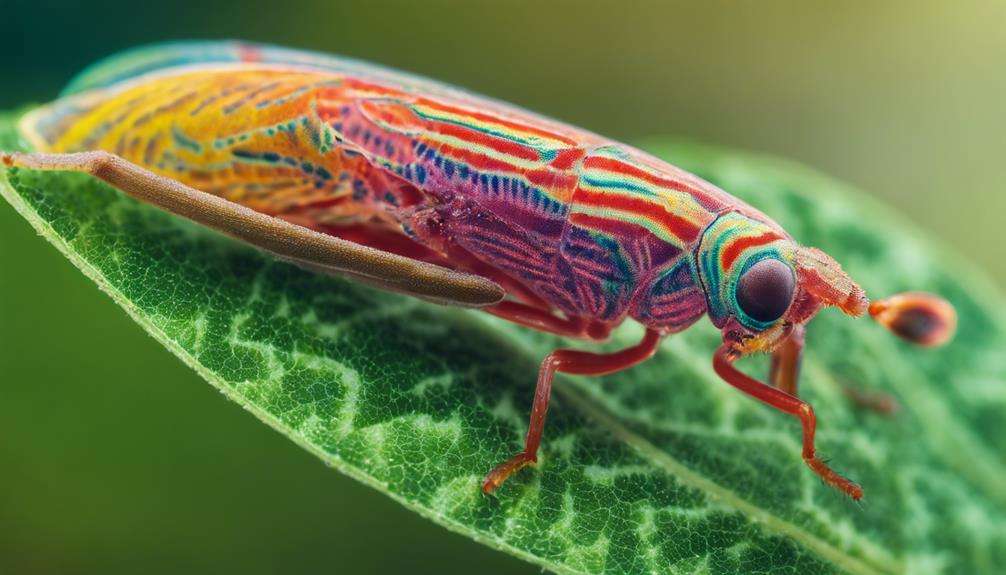
Get ready to explore the fascinating world of LeafHoppers!
These incredible insects can jump up to 10 times their body length, showcasing impressive agility on plant leaves.
As they feed on plant sap, LeafHoppers not only play a vital role in the ecosystem but also exhibit unique characteristics that make them a captivating subject for study.
LeafHopper Characteristics
With their remarkable jumping ability and specialized mouthparts for feeding on plant sap, LeafHoppers are fascinating insects to observe in the wild. These agile creatures can jump up to 10 times their body length, showcasing impressive athleticism. Typically found on plant leaves, they measure up to half an inch in length, making them relatively small but vital in the ecosystem as an important food source for other organisms. LeafHoppers possess specialized mouthparts for piercing plant tissues and extracting sap efficiently.
Here are some characteristics that make LeafHoppers stand out:
- Impressive jumping ability
- Plant sap feeders
- Small size but significant ecological role
- Specialized mouthparts for feeding
- Found on plant leaves
LeafHopper Habitat Preferences
Exploring LeafHopper habitat preferences reveals the intricate relationship between these agile insects and the diverse plant species that support their feeding and breeding needs. LeafHoppers are commonly found on various plants, including grasses, shrubs, and trees, where they feed on plant sap by piercing the plant tissues with their mouthparts.
These insects prefer habitats with abundant vegetation to ensure a sufficient food supply. Additionally, they seek out plants with tender young shoots for egg-laying purposes, as the nymphs require these soft plant parts to develop successfully. LeafHoppers play a crucial role in the ecosystem by serving as a food source for various predators and contributing to nutrient cycling through their feeding activities.
Understanding their habitat preferences is essential for conserving these fascinating insects and maintaining the balance of plant life in diverse ecosystems.
Camel Spiders
Inhabiting desert regions and reaching lengths of up to 6 inches, Camel Spiders, despite their name, belong to the Solifugae order rather than being actual spiders. These fascinating creatures aren't deadly to humans but are formidable hunters that prey on insects, small rodents, and lizards.
Here are some intriguing facts about Camel Spiders:
- Camel Spiders are known for their impressive hunting skills and fast movements in desert environments.
- Despite their slightly terrifying appearance, they aren't venomous and pose little threat to humans.
- These nocturnal creatures are most active during the night, using their keen senses to hunt down prey.
- Camel Spiders have powerful jaws that allow them to crush their victims rather than using venom to subdue them.
- Their unique physiology enables them to thrive in extreme desert conditions, showcasing remarkable adaptations for survival.
Adding Camel Spiders to your insect collection will undoubtedly bring a touch of the exotic and mysterious desert world into your home.
Hercules Beetle
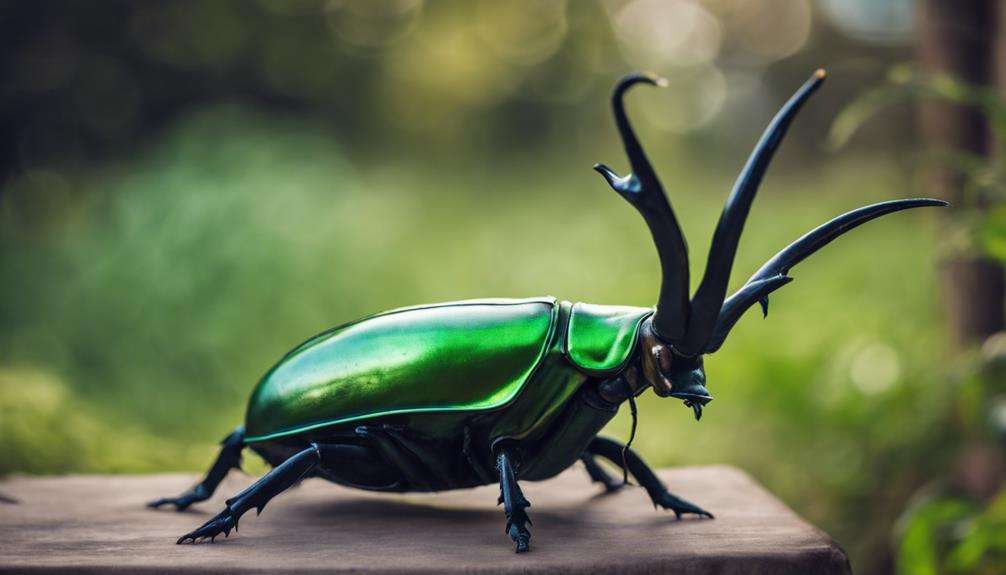
The Hercules Beetle, renowned for its immense size and extraordinary strength, captivates with its formidable presence in rainforest ecosystems.
As the heaviest insect globally, these beetles showcase an impressive display of power, capable of lifting objects twice their weight with ease.
Males of this species sport striking shades of green and brown, further enhancing their unique appearance. Their distinct horn, present in males, adds to their charismatic allure.
Equipped with robust mandibles, Hercules Beetles use these structures for both defense and feeding, highlighting their adaptability and survival skills in their natural habitat.
Despite their intimidating size and strength, these creatures are surprisingly docile, making them popular choices as pets in certain regions.
The Hercules Beetle stands out not only for its physical attributes but also for its fascinating characteristics, making it a prized addition to any insect collection.
Puss Moth
Captivating enthusiasts with its unique defense mechanism and medium size, the Puss Moth stands out as an intriguing insect to add to your collection. These fascinating creatures have white stripes that accentuate their appearance and make them easily recognizable.
- Foul-Smelling Defense: Puss Moths release a noxious liquid when threatened, deterring predators with their unpleasant odor.
- Medium-Sized Insect: Growing up to 2 inches in length, the Puss Moth is considered medium-sized among moth species.
- Dietary Habits: These moths primarily feed on the leaves of various trees as part of their diet, showcasing an interesting ecological niche.
- Life Cycle: Puss Moths undergo a remarkable transformation, evolving into beautiful furry moths as they progress through their life cycle.
- Safe and Engaging: Harmless to humans, Puss Moths offer a safe and captivating addition to insect collections, providing a unique opportunity for observation and study.
Elephant Hawk Moth
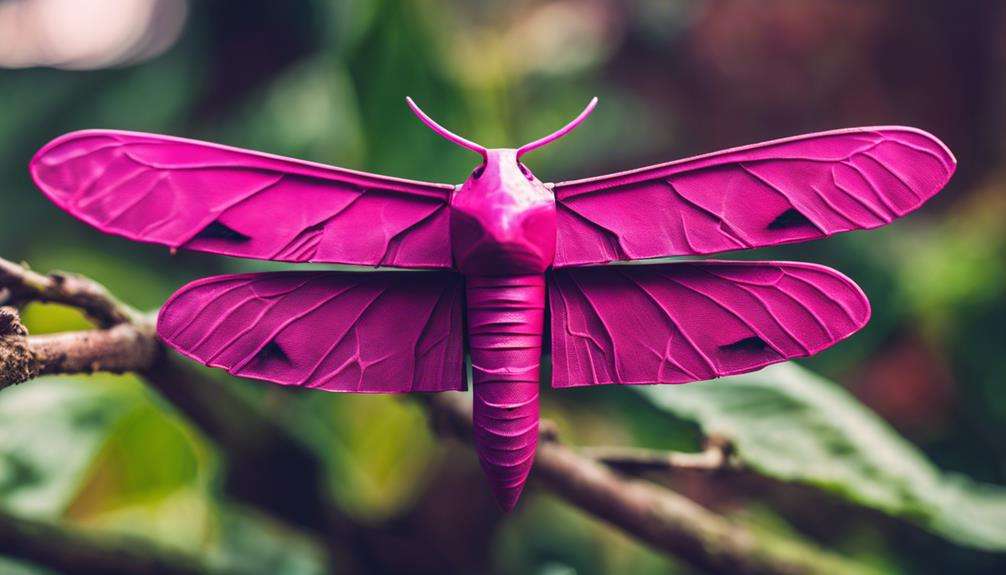
With its vibrant colors and distinctive features, the Elephant Hawk Moth is a captivating addition to any insect enthusiast's collection. This moth, commonly found in gardens and meadows, is easily recognizable by its striking appearance. The caterpillar of the Elephant Hawk Moth is particularly fascinating, as it bears a remarkable resemblance to an elephant's trunk, adding to the allure of this unique species.
When in a state of rest, the Elephant Hawk Moth showcases a posture that mirrors the wings of a falcon, demonstrating its adaptability and mimicry. The wings of this moth are adorned with fuzzy hair-like projections, further enhancing its distinct look and setting it apart from other moth species. Encountering the Elephant Hawk Moth provides a captivating glimpse into the rich diversity of insect species, making it a must-have for any collector looking to expand their collection with visually stunning and intriguing specimens.
Frequently Asked Questions
What Is the Most Unusual Insect?
The most unusual insect, in terms of Insect Oddities, is the Giant Weta. With its massive size, distinct features, and island habitat, it stands out among the insect world. Add this fascinating creature to your collection!
What Is the Rarest Insect in the World?
The Lord Howe Island Stick Insect, also known as the 'tree lobster,' is the rarest insect globally, with its numbers once dwindling to near extinction. Conservation efforts have successfully increased their population, preserving this unique species.
What Insect Represents Creativity?
Insect art shines through the Orchid Mantis, a master of mimicry and beauty. Its floral disguise mesmerizes, a masterpiece of nature's creativity. Embrace this stunning creature, a living canvas in your collection.
What Is the Most Abundant Insect in the World?
In the vast tapestry of insect population, the beetle triumphs as the most abundant creature. With its 350,000 diverse species, beetles reign supreme, showcasing nature's intricate design and resilience in the animal kingdom.
Conclusion
Congratulations on expanding your collection with these bizarre insects!
As you observe the Scorpion Fly's unique mating rituals and marvel at the Goliath Beetle's impressive size, remember that each insect holds a key to unlocking the mysteries of the natural world.
Keep exploring and discovering new species to add to your collection, as there are endless wonders waiting to be uncovered in the fascinating world of entomology.
Happy collecting!
